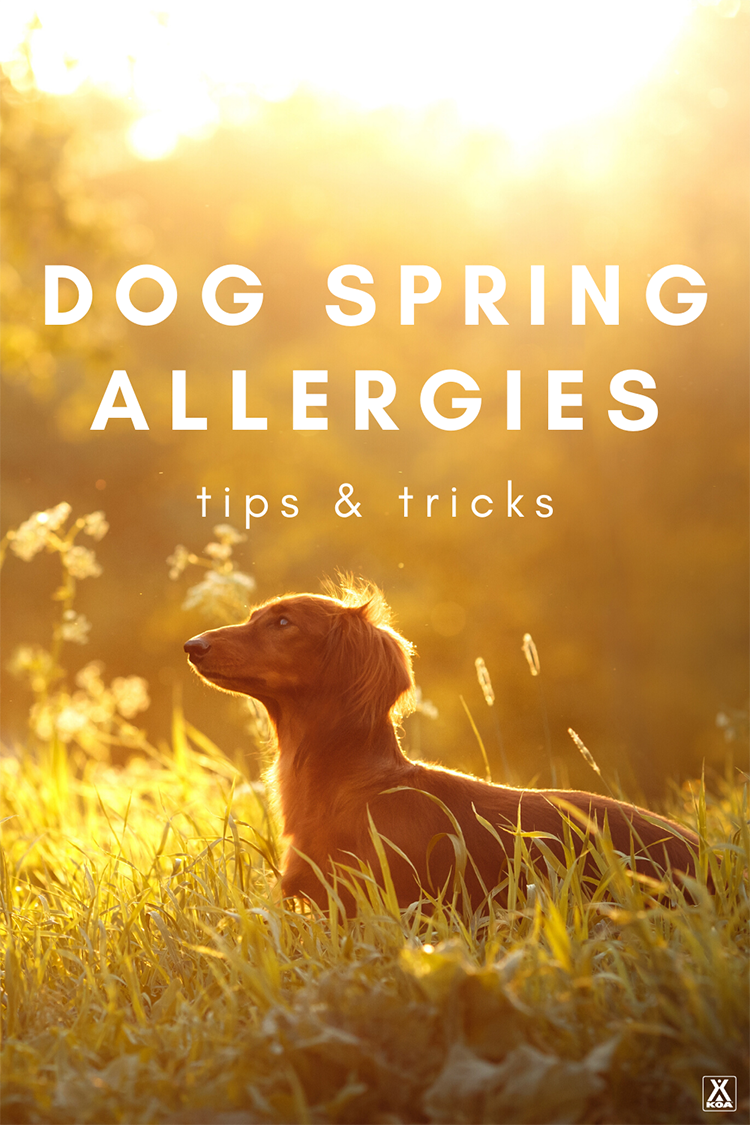Do Dogs Get Allergies in the Spring?
Spring means the return of mild temperatures and lush, blooming flowers. By most accounts, it is a beautiful and refreshing time of year — except for seasonal allergies. Many of us are familiar with the discomfort of seasonal allergies, but did you know these allergies can also affect your dog? Yes! Your dog can have spring allergies.
Common Dog Seasonal Allergy Symptoms
Seasonal allergies manifest themselves differently in dogs than they do humans, which may make it more challenging to identify. There are a few common symptoms of spring allergies in dogs you can watch for.
Symptoms of seasonal allergies your dog might experience include:
- Itching: Constant itching is the most common indicator of dog spring allergies. Signs of itching include excessive licking, scratching, biting and scooting. You should also check your dog’s skin for signs of inflammation or hot spots.
- Sneezing: It is normal for your dog to sneeze on occasion, but excessive sneezing is a common side effect of seasonal dog allergies.
- Wheezing: Wheezing, difficulty breathing or other respiratory problems could indicate the presence of allergies.
- Ear Infections: If your dog is scratching their ears or continuously shaking their head back and forth, they could have an ear infection. Additional signs of ear infections include inflammation and redness in the ears.
If your dog is experiencing one or more of these symptoms, write it down. If these side effects worsen or persist, you should take your dog for a check-up. A written record of the severity and duration of your dog’s seasonal allergy symptoms will be useful if your dog requires a trip to the veterinarian.
Four Tips for Helping Your Dog With Seasonal Allergies
You should always consult your dog’s veterinarian for any medical issues or concerns, including allergy treatment. However, if you notice common dog seasonal allergy symptoms in your pet, there are some things you can do to alleviate their symptoms and make them more comfortable.
1. Keep Your Home Clean
Clean your home regularly — and thoroughly — to eliminate dust and pollen that irritate your dog’s allergies. Regular, thorough cleaning includes frequent dusting, vacuuming all carpeted areas, cleaning and replacing air filters and laundering linens, including your dog’s bedding.
2. Invest in an Air Purifier
Air purifiers help improve air quality in your home by capturing and eliminating some common contaminants that may contribute to your pet’s allergies. Place your air purifier in the room your dog spends most of their time.
3. Give Your Dog a Bath
Give your dog regular baths during the spring to keep their fur and skin clear of any irritants. Use a soothing, oat-based dog shampoo to help calm your dog’s skin if they are itching. In between baths, use pet-safe wipes to clean your dog’s paws, ears and fur after walks.
4. Plan Your Walks Carefully
Adjust your daily walk to avoid areas with too many pollen-producing plants. You should also avoid taking your dog for a walk when pollen levels are high. Pollen levels are typically at their highest in the morning and on dry, warm days. Check your local weather forecast for daily pollen readings.


























